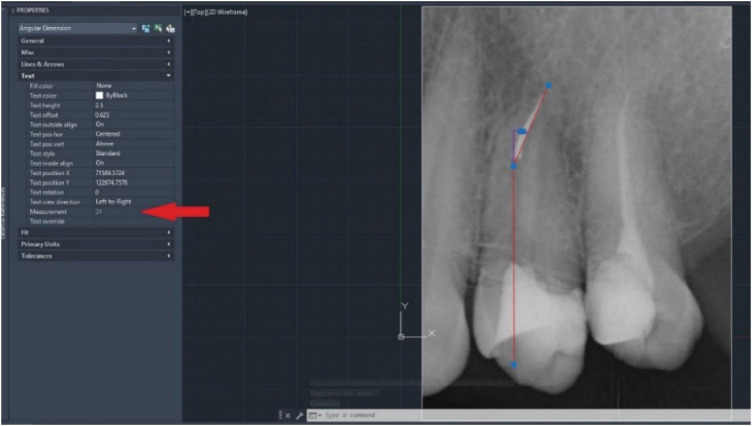Search
- Page Path
- HOME > Search
- Investigation of fracture prevalence of instruments used in root canal treatments at a faculty of dentistry: a prospective study
- Mehmet Eskibağlar, Merve Yeniçeri Özata, Mevlüt Sinan Ocak, Faruk Öztekin
- Restor Dent Endod 2023;48(4):e38. Published online November 1, 2023
- DOI: https://doi.org/10.5395/rde.2023.48.e38

-
 Abstract
Abstract
 PDF
PDF PubReader
PubReader ePub
ePub Objectives The aim of this study was to examine the use of hand or rotary files by pre-graduation (fourth- and fifth-year) and postgraduate students in endodontic treatments and to determine the incidence of file fracture and the management of cases with broken instruments.
Materials and Methods A total of 2,168 teeth undergoing primary endodontic treatment were included in this study. It was determined that 79 of these teeth resulted in broken tools. In the case of broken tools, the education level of the treating clinician, the tooth that was being treated, the canal and fracture level, the curvature of the tooth and the management of the broken instrument were recorded. Periapical radiographs of the patients were used to calculate curvature following the Schneider method.
Results There was no significant difference in the incidence of broken tools according to education level (
p > 0.05). The incidence of file fracture in molar teeth (73.4%) was higher than in other teeth (p < 0.05). More files were broken in the mandibular molar MB canal (20.25%) and in the apical third of the canals (72.1%). The risk of instrument fracture was high in teeth with moderate (44.3%) and severe (38%) curvature canals. The management of apically broken (80%) files mostly involved lefting (p < 0.05).Conclusions There was no statistically significant difference between fourth-year students, fifth-year students and postgraduate students in terms of instrument fracture.
- 35 View
- 1 Download
- 2 Web of Science

- Dental management of patients with X-linked hypophosphatemia
- Bin-Na Lee, Hye-Yoon Jung, Hoon-Sang Chang, Yun-Chan Hwang, Won-Mann Oh
- Restor Dent Endod 2017;42(2):146-151. Published online January 6, 2017
- DOI: https://doi.org/10.5395/rde.2017.42.2.146
-
 Abstract
Abstract
 PDF
PDF PubReader
PubReader ePub
ePub X-linked hypophosphatemia (XLH) is a hereditary metabolic disease caused by the loss of phosphate through the renal tubules into the urine, and an associated decrease in serum calcium and potassium phosphate. Its dental features include spontaneous dental abscesses that occur in the absence of trauma or dental caries. The aim of this case report was to describe the dental problems of XLH patients and to evaluate limitations in their treatment. A 14 year old male and a 38 year old female with XLH were referred to the Department of Conservative Dentistry for endodontic treatment. The dental findings were periapical abscesses without obvious trauma or caries. Conservative endodontic treatment was performed in teeth with pulp necrosis and abscess. In case 1, the treated teeth showed improvements in bone healing, without clinical symptoms. However, in case 2, the implants and the treated tooth showed hypermobility, and the final restoration was therefore postponed. Early diagnosis, periodic examinations, and communication with the patient's pediatrician are important in the dental management of patients with XLH.
- 21 View
- 0 Download

- Management of separated file in the root canal
- Hye-Jeong Kim, Hoon-Sang Jang, Se-Hee Park, Kyung-Mo Cho, Jin-Woo Kim
- J Korean Acad Conserv Dent 2006;31(3):161-168. Published online May 31, 2006
- DOI: https://doi.org/10.5395/JKACD.2006.31.3.161
-
 Abstract
Abstract
 PDF
PDF PubReader
PubReader ePub
ePub During root canal preparation procedures, the potential for instrument separation is always present. Files, a lentulo, a Gates-Glidden (GG) bur or any manufactured obstruction can be left behind in the canal. Nickel-titanium (NiTi) rotary files are in common usage in these days. Despite their undeniable advantages, there is a potential risk of separation within the canals. It is very rapid, unpredictable, and creates a great deal of stress for the practitioner.
When an endodontic instrument separates, the best option is to remove it. Ultrasonic instruments and microscopes have improved the success rate for removing separated instruments. But it is difficult and not always possible. Therefore prevention is the key.
In this case report, several management methods of separated file in the canal are presented.
- 24 View
- 0 Download

- The development of KACD(korean academy of conservative dentistry) online article contribution management system based on KISTI-ACOMS
- Jae-Won Park, Mu-Yeong Kang
- J Korean Acad Conserv Dent 2003;28(6):504-510. Published online November 30, 2003
- DOI: https://doi.org/10.5395/JKACD.2003.28.6.504
-
 Abstract
Abstract
 PDF
PDF PubReader
PubReader ePub
ePub Societies are important sources of new information for users. However, most of these societies still rely on traditional, or rather ancient methods for gathering and servicing the information. Furthermore, most of the societies are trying to electrify processes such as managing members and paper submission as well as the process managing the information for service but are limited due to financial and technical reasons. Therefore, KISTI(Korea Institute of Science and Technology Information) has developed the 『KISTI-ACOMS(KISTI-Article COntribution Management System)』as part of the national project for automating the process of processing academic information by societies, in order to convert journals published by academic societies in Korea into an electronic form and make them accessible on the Internet. This system has been developed in the year 2001 and has since been distributed to societies free of charge.
The number of societies requesting the service has risen recently, which prompted us to take more recommendations of the societies that adopt this system into account in expanding and standardizing the area of service being provided by the system.
- 20 View
- 0 Download


 KACD
KACD
 First
First Prev
Prev


